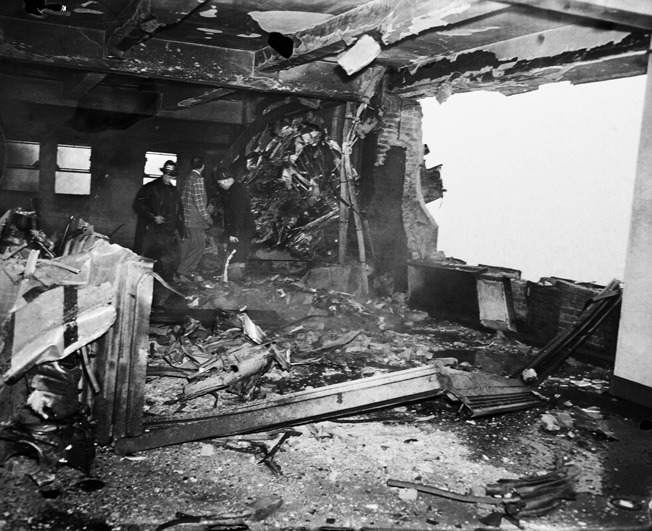Miracle On The Empire State: Betty Lou Oliver Survived A 1,000-ft Elevator Plunge
Life often surprises us with incredible events we never anticipate. Amidst the most perilous circumstances, some individuals defy the odds and survive what seems certain death.
One such remarkable person holds a Guinness World Record for surviving a 1,000-foot fall despite sustaining serious injuries.
Curious to know more about this extraordinary survivor and her incredible journey? Keep scrolling down.
The day Betty Lou Oliver survived the unthinkable
On July 28th, 1945, New Yorkers expected an ordinary day, hoping for peace as World War II was almost over.
That morning, 20-year-old Betty Lou Oliver began her final shift as an elevator operator at the Empire State Building. After months on the job, she was ready for a change, expecting a quiet end to her tenure.

Betty cheerfully assisted tourists and employees, her elevator shuttling up and down the building’s 102 floors. Little did she know, high above the city, Lt. Col. William Smith was piloting a B-25 bomber from Massachusetts to LaGuardia Airport.
The clear skies at takeoff gave way to a dense fog as Smith approached New York. Just before reaching LaGuardia, Smith radioed the airport and was advised against landing due to poor visibility.
Confident in his skills, Smith disregarded the warning and proceeded with the landing. He didn’t realize he was dangerously flying close to the city’s skyscrapers.
Badly burned in the tragic plane crash

Instead of turning left after the Chrysler Building, Smith mistakenly turned right, bringing him directly over midtown Manhattan.
According to civil air regulations at the time, all aircraft were required to fly at least 2,000 feet above Manhattan. Smith’s plane, however, was only 913 feet above the streets.
At approximately 9:40 AM, the B-25 crashed into the Empire State Building between the 78th and 80th floors. Lt. Col. Smith and his two crewmen tragically lost their lives in the accident.
Witnesses described the horrifying scene: flames engulfed entire floors as the plane’s wings were torn off, and its fuel tanks exploded, causing a fire that burned for 40 minutes.

Betty Lou Oliver was on the 80th floor when the plane struck. The impact threw her from her elevator, hurling her into the air before she crashed onto the hard concrete floor amidst the flames.
Fires raged through offices and hallways on the 78th, 79th, and 80th floors, exacerbated by parts of the plane’s engine falling down an elevator shaft and creating an 18×20-foot hole in the building.
Despite suffering severe burns and multiple fractures, Betty was thankful to be alive, having narrowly escaped death. Rescue teams swiftly arrived on the scene to aid the injured.
Incredible survival from a 1,000-ft fall

As Betty lay on a stretcher and placed in another elevator cab to go down to the ground floor, she had no idea that the crash had severely damaged the elevator cables. Moments after the elevator started moving, the cables snapped, sending Betty plummeting at an astonishing speed.
The elevator fell over 1,000 feet, roughly 75 stories—a drop considered unsurvivable for any human. Remarkably, Betty remained conscious throughout the terrifying descent.
“I started yelling and pounding on the floor. I was going down so fast that I just had to hang onto the sides of the elevator to keep from floating,” she recounted to her sister, as reported by The Courier-News.

George A. Mount, who inspected the site, described the concrete floor of the elevator shaft as “crushed like an eggshell.” All six cables holding the cab had snapped, and there was no functioning braking system.
Betty’s survival was likely aided by air pressure within the shaft slowing the fall and the accumulated cables forming a cushion-like spiral at the bottom.
Rescuers had to cut Betty from the wreckage. Already injured from being thrown out of the elevator on the 80th floor, she sustained further serious injuries from the fall, including broken bones in her back, pelvis, and neck.
A quiet life after the accident

After being rescued from the wreckage, Betty spent four months recovering at Bellevue Hospital before being discharged. Though able to walk, she relied on a wheelchair for some time and continued recuperating at her aunt’s home for several more months before returning to Arkansas.
Betty chose not to engage in any more interviews or media attention, stating she simply wasn’t interested in discussing the incident.
She later married Oscar Lee, with whom she had three children and seven grandchildren. Oscar passed away in 1986, and Betty followed 13 years later at the age of 74, on November 24, 1999.

